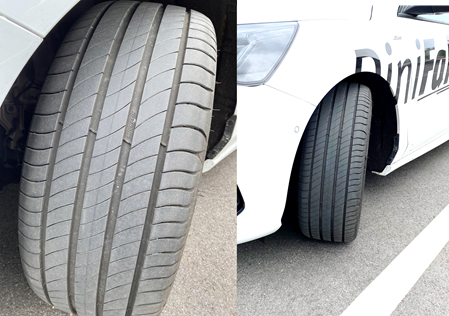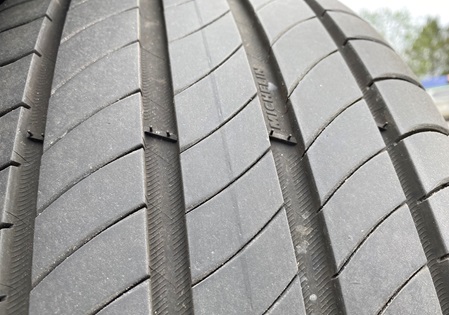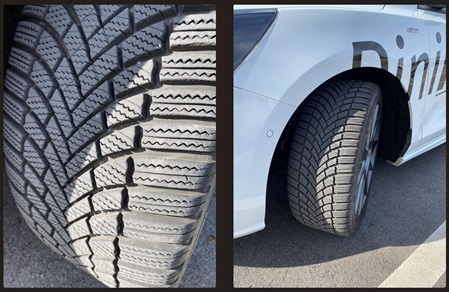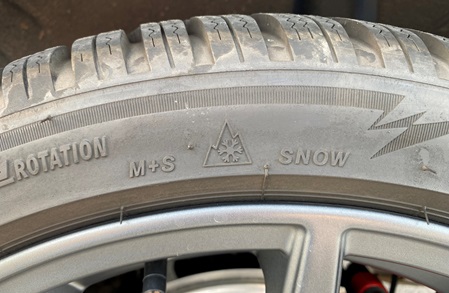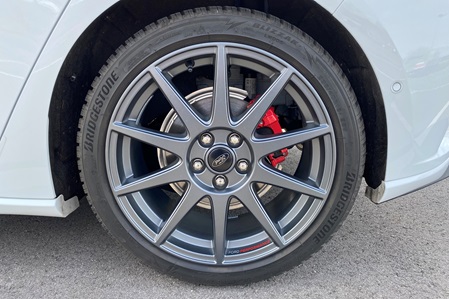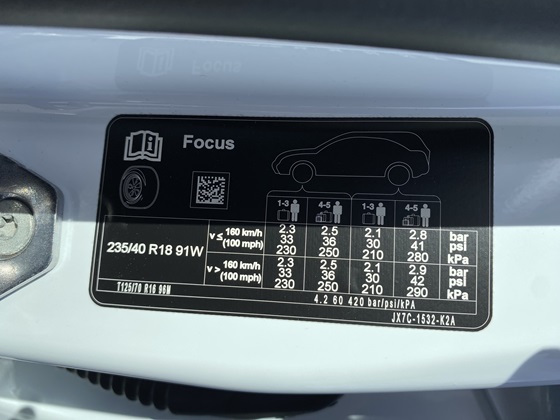Tires
Your tires are the only connection between your car and the road. The right tires are therefore very important, as a lot depends on the condition of your tires. The stopping distance shortens or lengthens and the grip in rain, snow or cold worsens or improves with every millimeter of tread on your tires. Buying high-quality tires is definitely worth it.
Summer tires
Surface
The summer tire has grooves in the surface. These drain water to the side. This improves grip in rain or generally when there is water on the road. Caution: There is a risk of aquaplaning despite good tread. The rubber compound is adapted to warmer temperatures.
Labelling
The easiest way to recognize a summer tire is by its surface. Summer tires do not have any special markings for summer.
Winter tires
Surface
The winter tire has additional grooves in the tread that improve grip in snow and mud. The rubber compound is adapted to the cooler temperatures.
Labelling
Aside from the surface, you can also recognize a winter tire by the M+S embossing and the snowflake symbol on the side of the tire
Summer tires in winter and winter tires in summer - > please don't!
Please drive with good summer tires in summer and good winter tires in winter. Please do not use summer tires in winter, even if there is rarely snow or mud on the road. The rubber compound is different for summer and winter tires and is adapted to the corresponding temperatures. That's why even a good summer tire never sticks as well as a winter tire in cold winter conditions. A winter tire wears out more quickly in summer when temperatures are high. The grip of a winter tire is also worse at high temperatures. A good reminder for when to change winter and summer tires is -> from E to O and O to E. So summer tires from Easter to October and winter tires from October to Easter.
Snow chains must be attached to the drive wheels. So at the front of your driving school vehicle.
You can tighten the wheel bolts by turning them to the right. Just remember how to close a PET bottle.
You can loosen the wheel bolts by turning them to the left. Just remember how to open a PET bottle.
Air pressure tires
There is an adhesive on the inside of the driver's door with information about how much air there needs to be in the tires, depending on the load, people and speed. This information can also be found in the vehicle's operating instructions. Your driving school vehicle has an electronic tire pressure check. So you can easily display the air pressure of each individual tire in the instrument cluster. It is still advisable to check the air pressure manually from time to time, for example when refueling.
For longer motorway journeys, it is advisable to slightly increase the tire pressure. This has the advantage that the tires do not heat up as much.
If the tire pressure is too low, grip worsens, wear increases, fuel consumption increases and thus the environmental impact. Therefore, check regularly here too.


